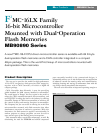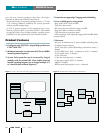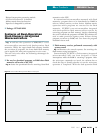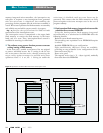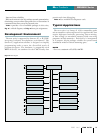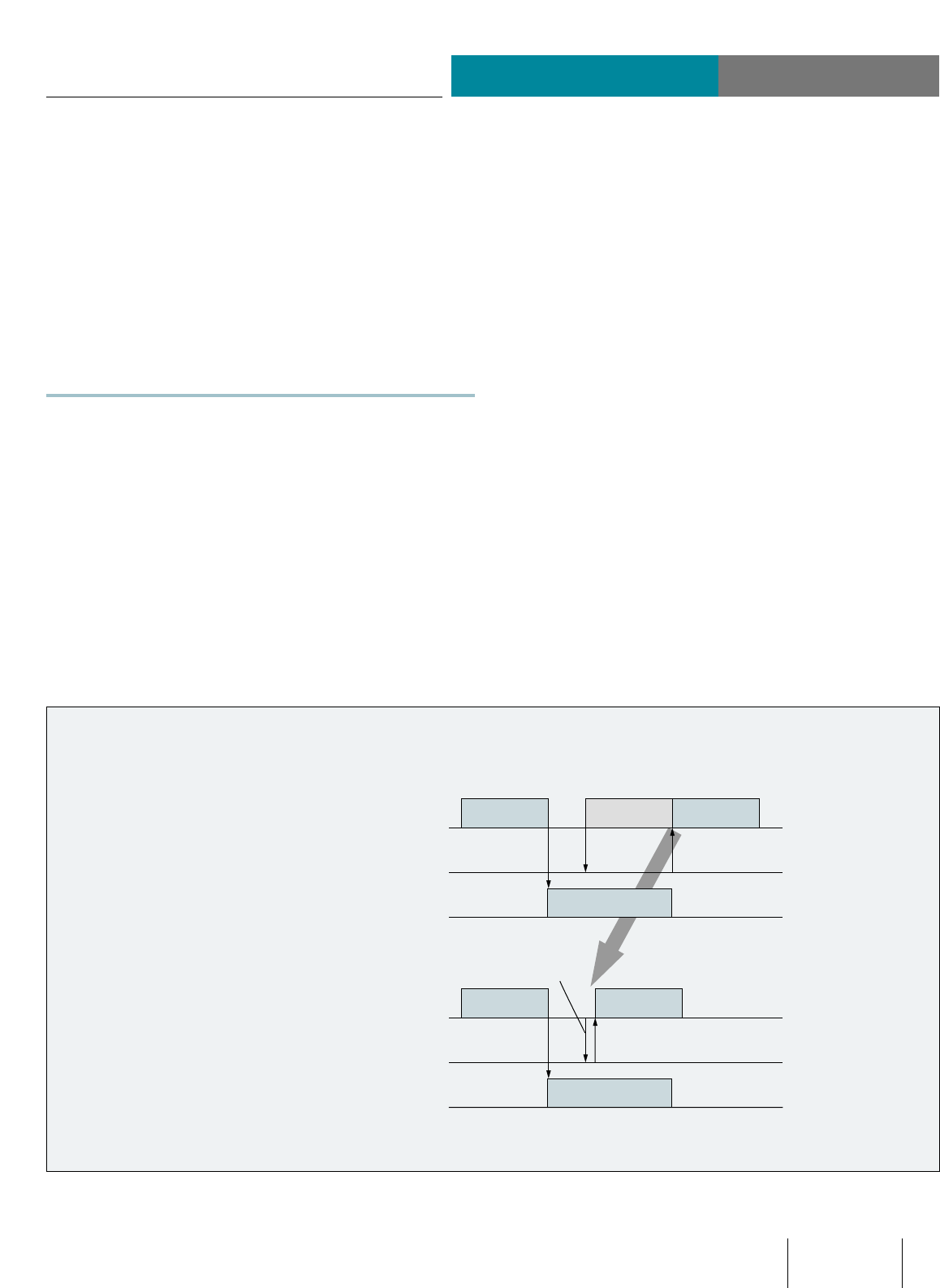
New Products
MB90890 Series
13
FIND Vol.21
No.12003
Delayed interruption generating module
8/10-bit A/D converter: 8 channels
Address match detection function
Input level changeable by software
■ Package: FPT-48P-M26
Features of Dual-Operation
Flash Memory-Integrated
Microcontrollers
Fig. 1 outlines the operation of MB90F897 series
microcontrollers mounted with dual-operation flash
memories. While the upper bank flash memory handles
the execution of programs, the lower bank flash memory
can be applied for write/erase operations (or vice versa).
The new series also offers the following advantages for
system control.
■ No need to download programs to RAM when flash
memories self-rewrite to the CPU
Fig. 2 shows the operational flow for rewriting from flash
memories to the CPU.
In conventional microcontrollers mounted with flash
memories, programs have to be downloaded to RAM in
order to initiate rewrites, as these devices disallow rewrite
operations while programs are executed in the flash
memories. FUJITSU s new microcontrollers integrated
with dual-operation flash memory allow rewrites by
executing programs on flash memory, thereby eliminating
the need to transfer the programs to RAM. This obviates the
need to make provisions against power failures during
program execution on RAM, and cuts down the program
download time as well.
■ Flash memory rewrites performed concurrently with
system control
Fig. 3 illustrates the control sequence for rewriting the
flash memory using interruption.
Conventionally, FUJITSU s flash memory-integrated
microcontrollers have not been designed to allow
interruptions while the RAM is executing a program. After
the write/erase commands are issued, the software has to
check the flag to identify whether or not the write/erase
operation is completed. With the dual-operation flash
Figure 3 Control of Flash Memory Rewrite Based on Interruption



